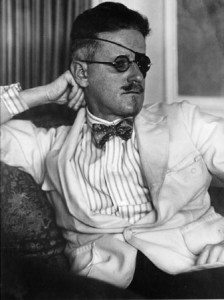April 1949. HG was in his third year at the uptown campus of the City College of New York (CCNY). The tuition free college was dubbed “the Harvard of the proletariat.” Tough to get into and an academically rigorous institution, CCNY was noted for producing Nobel Prize winners, scientists (Jonas Salk, conqueror of polio, among them), journalists and left wing activists. That spring some 65 years ago, CCNY was gripped by a student strike, a protest against anti-semitism in the Spanish language department and racial segregation in the college dormitories. The misguided college administration called in the police. With cries of “No cops on campus”, students battled the police. (HG was whacked in the arm with a billy club). Some 16 students were arrested. HG remembers a pal shouting defiantly as he was hurled into a paddy wagon. Big rally the next day in support of the jailed students (almost immediately released by a sympathetic judge). And, there on an improvised platform was Pete Seeger. He was 29 then but already an icon in folk music and left wing circles. With Pete leading, the campus burst into song. HG, his hand bandaged, shook hands with Seeger. “Keep fighting the good fight,” encouraged Seeger. Well, HG’s activism and political ardor cooled over the years. Pete remained the same, always present when “the good fight” was being fought. May that good, brave, talented man rest in peace.
Pete Seeger R.I.P.
January 29th, 2014 § 2 comments § permalink
There’s Something Fishy Going On
October 18th, 2012 § 0 comments § permalink
Fresh fish has always been expensive but now that our ocean fisheries have been nearly decimated, prices are getting a bit nutty. Good, wild caught, fresh and unfrozen salmon, tuna, swordfish and halibut hover around $29 a pound. HG feels that paying that much for a simple piece of fish is a bit self indulgent. Therefore, HG is opting for moderately priced, farm raised fish like tilapia and catfish. Older fish farms were ecological disasters — pumping filth into the environment and shipping out muddy tasting, chemically processed product. Some modern farms have really cleaned up their act and become more environmentally sound with the result that the fish are healthier and quite palatable. Make sure to seek out fish from these type of farms (Whole Foods has very strict guidelines for their farmed fish purveyors — so buying through them is a good bet).
Here’s a very good way of cooking them. Coat the fish in a mixture of Hellman’s mayonnaise and Dijon mustard. Roll the fish in Louisiana Fish Fry or Zatarain’s Fish Fry or panko (crushed fine). Fry in a mixture of grapeseed oil and brown butter. After taking the fish out of the pan, melt a bit more butter with lemon juice, capers and a few drops of Tabasco. Pour this flavorful sauce over the crispy fish.
During HG’s college days at the City College West Harlem campus, HG enjoyed very cheap and very good fried catfish sandwiches. The breaded catfish was fried in lard (like cast iron pans, a staple of Harlem fry cooks), doused in a blazing hot pepper sauce and served between two slices of Wonder or Silvercup bread. It was accompanied by cole slaw or potato salad. HG’s version of fried fish is just a little bit fancier.
Bloomsday
June 23rd, 2012 § 1 comment § permalink
June 16 was Bloomsday a day of celebration and commemoration of the life of the writer James Joyce and his extraordinary novel, Ulysses. The day refers to the June 16 in the novel. The day in which all of the action takes place during the one day peregrinations throughout Dublin of its Jewish hero (or anti-hero), Leopold Bloom. HG was introduced to the wonders of Joyce in his CCNY college days by Prof. Theodore Goodman, a legendary figure at City College. Goodman taught a course devoted to writing short stories. Students wrote stories. Read them aloud. These were then criticized by Goodman and fellow students. Criticism was withering. To say the least, punches were not pulled. The class text was Joyce’s collection of short stories, Dubliners. The Joyce stories were meticulously analyzed under Goodman’s direction. We leaned there were no accidents in these stories. They were pieces of prose architecture, each word essential in the total framework. It was a humbling experience for embryonic writers. Goodman was elderly and in frail health. Sometimes he missed a class. HG and his mates waited outside the classroom hoping that he would show up. There was a feeling of dread. We loved him, even though he was no Mr. Chips. He was tough and his one-to-one conferences with students could be a scalding experience. Goodman lived through his class with HG and gave HG an “A.” Whenever experience lowers HG’s self esteem, HG remembers that “A.”
In a recent review in The Economist of a Joyce biography by Gordon Bowker, the reviewer noted: “The hero of ‘Ulysses’, Leopold Bloom, was born out of Joyce’s affection and fascination with Jewish culture; which would lead him, in turn, to help several Jewish men and women escape Austria and Germany during the second world war.” It would have been appropriate for HG to celebrate Bloomsday by accompanying a bialy with cream cheese with a glass of Dublin-brewed Guiness Stout. But, in the absence of bialys in New Mexico, HG had to be content in raising a snifter of kosher Slivovitz to the memory of Joyce, a gifted (and difficult) man.
Later this year, during the Christmas season, HG and BSK will watch The Dead, the John Huston cinema version of the longest story in Dubliners. In HG’s opinion, this is the finest cinema version of prose fiction ever achieved.


